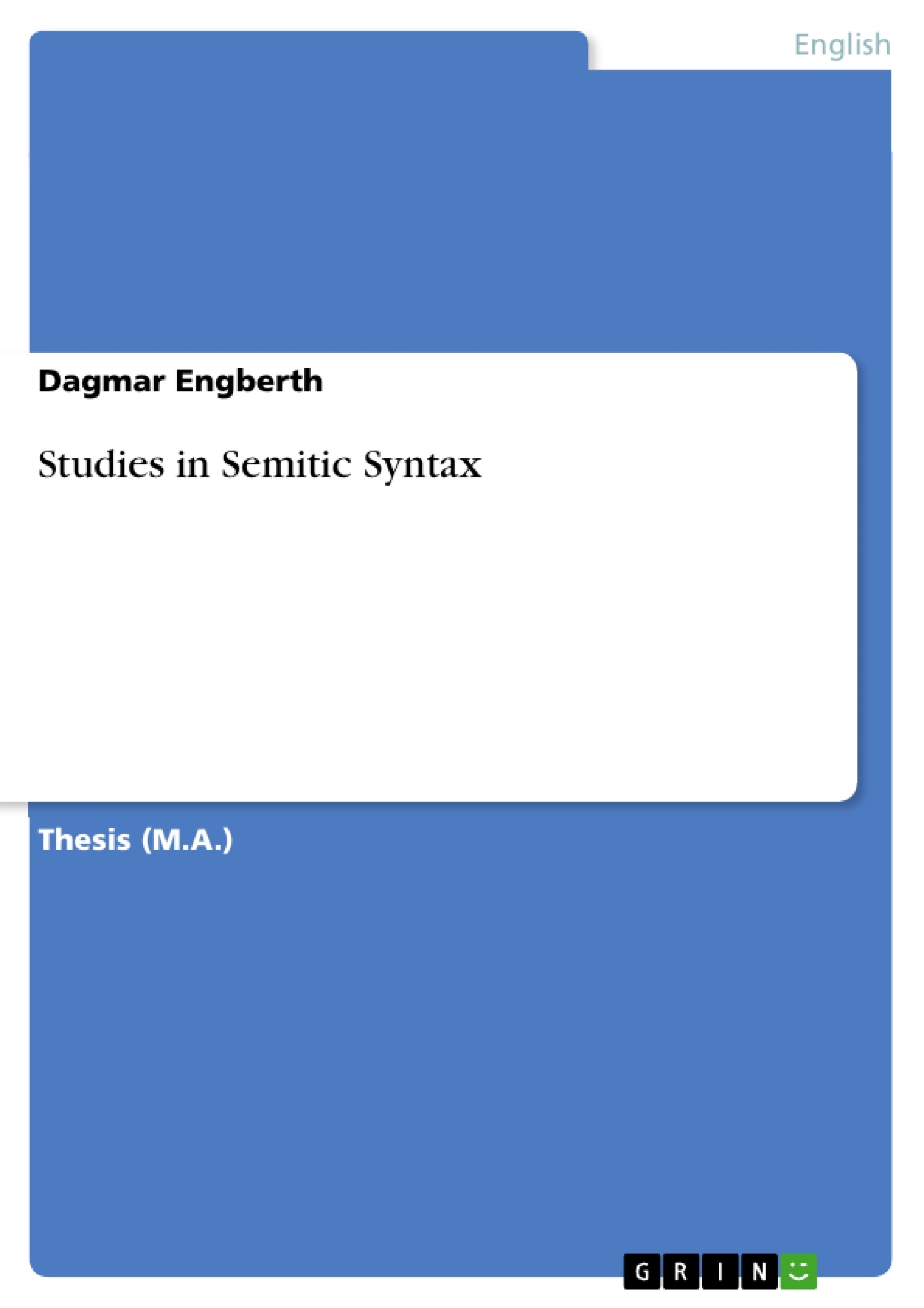This work places the theory of Transformational Grammar into the foreground presenting it applied to Arabic and partly to Hebrew.
In the first part of this work the theory is presented summarizing all rules and principles that are relevant for this subject.
In the second and third part of this work the analyses of Abdelkader Fassi-Fehri and Ur Shlonsky are examined with regard to the syntactic structure of Arabic and Hebrew.
Finally, it may be observed that this work more or less applies a syntactic theory to a language rather than advancing a new one itself.
Inhaltsverzeichnis (Table of Contents)
- INTRODUCTION
- I. TRANSFORMATIONAL GRAMMAR. A BRIEF OVERVIEW.
- 1. Looking At Other Linguists' Theories
- II. A STUDY OF SEMITIC SYNTAX
- 1. ANALYZING FASSI-FEHRI`S THEORY
- 1.1. How Are Words Formed In Arabic?
- 1.1.1. Summary
- 1.2. Word Order In Arabic
- 1.2.1. S-V-O versus V-S-O
- 1.2.2. Case Assignment
- 1.2.3. The EPP
- 1.3. Summary
- 2. SHLONSKY`S APPROACH
- 2.1. The Order Of Inflectional Elements In Hebrew And Arabic
- 2.1.1. Imperfectivity In Hebrew And Arabic
- 2.2. Word Order In Hebrew
- 2.2.1. Negation And Word Order In Arabic
- The 'laa' Negation
- The 'laysa' Negation
- The 'maa' Negation
- 2.3. Summary
- 1. ANALYZING FASSI-FEHRI`S THEORY
Zielsetzung und Themenschwerpunkte (Objectives and Key Themes)
This work aims to apply the theory of Transformational Grammar to the languages of Arabic and Hebrew. The focus is on examining existing analyses of these languages, highlighting key aspects of their syntactic structure.- The application of Transformational Grammar to Semitic languages.
- The analysis of Arabic syntax as presented by Abdelkader Fassi-Fehri.
- The examination of Ur Shlonsky's approach to Hebrew syntax.
- Comparative analysis of Hebrew and Arabic syntax.
- Focus on specific areas such as word formation, word order, and the role of negation in both languages.
Zusammenfassung der Kapitel (Chapter Summaries)
The introductory chapter provides a brief overview of Transformational Grammar, setting the stage for the subsequent analyses of Arabic and Hebrew. Chapter I delves into the analysis of Arabic syntax by Abdelkader Fassi-Fehri, focusing on aspects such as word formation and word order, including the concepts of S-V-O versus V-S-O, case assignment, and the EPP. This chapter also examines the role of negation in Arabic. Chapter II shifts attention to Ur Shlonsky's approach to Hebrew syntax. The chapter explores the order of inflectional elements in both Hebrew and Arabic, with particular emphasis on the concept of imperfectivity. It also analyzes word order in Hebrew and examines the relationship between negation and word order in Arabic.Schlüsselwörter (Keywords)
This work explores the realm of Semitic syntax using the framework of Transformational Grammar. It delves into the analysis of Arabic and Hebrew, examining key concepts such as word formation, word order, case assignment, the Extended Projection Principle (EPP), and the role of negation in both languages. Central to the discussion are the theoretical frameworks of Abdelkader Fassi-Fehri and Ur Shlonsky, providing insights into the complexities of Semitic syntax.
Excerpt out of 86 pages
- scroll top
- Quote paper
- Dagmar Engberth (Author), 2000, Studies in Semitic Syntax, Munich, GRIN Verlag, https://www.grin.com/document/110658
Look inside the ebook



